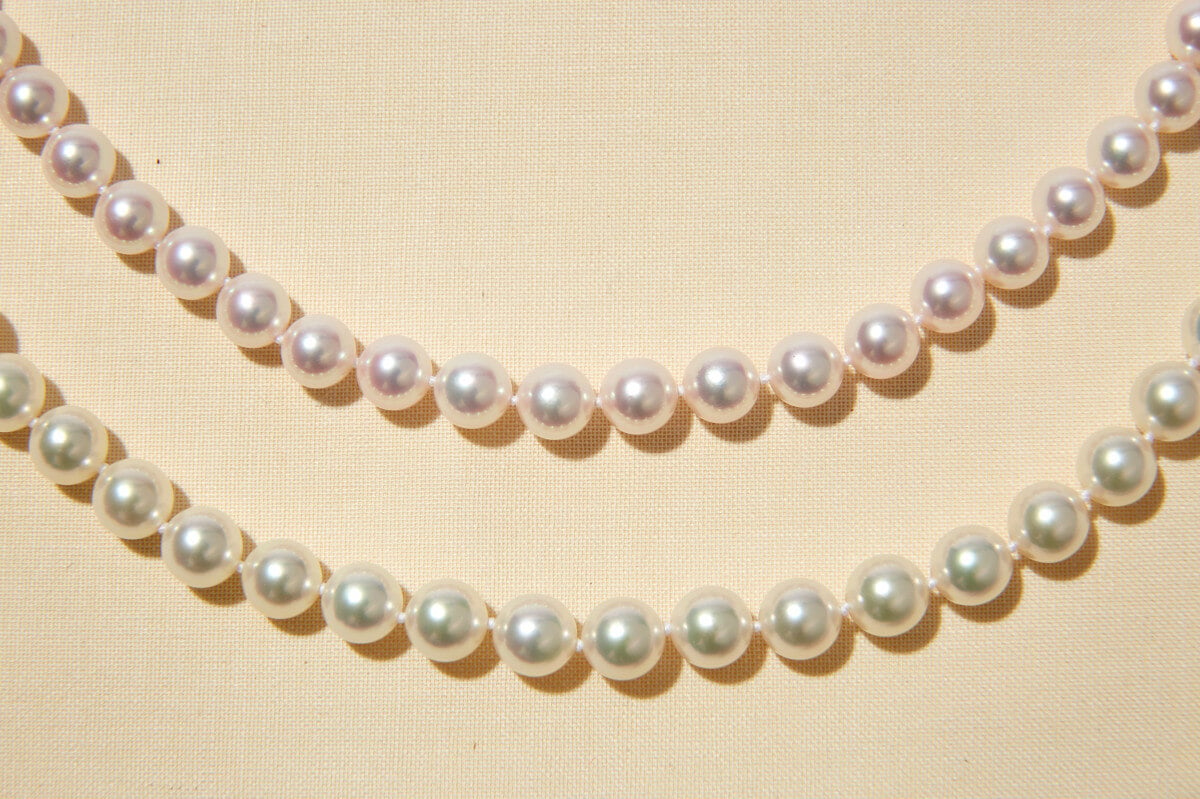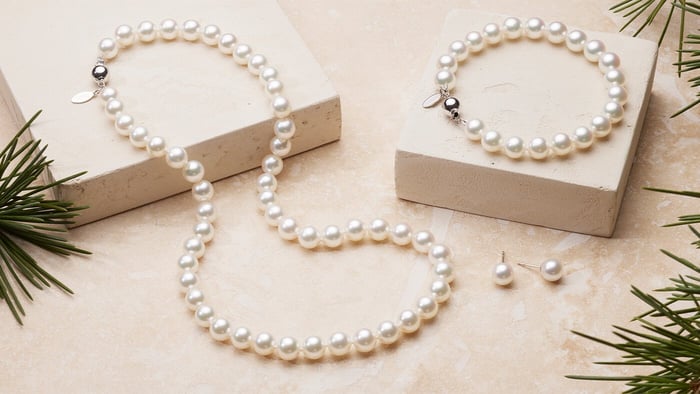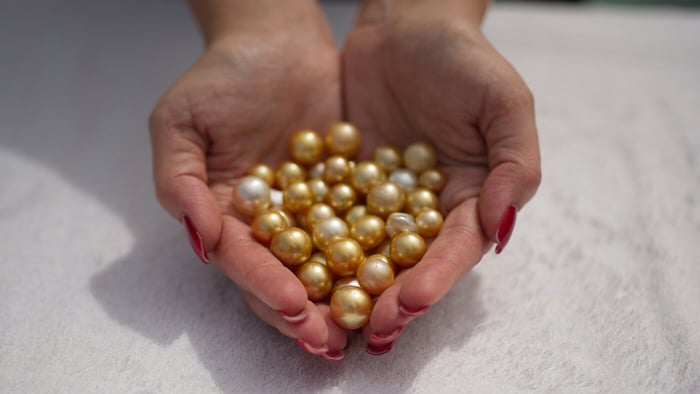That time of the year to share some love and do some extensive research on buying that perfect gift for your loved ones is here! We understand the overwhelming amount of information there is on all the different pearl types. Since you are buying a gift that will last a lifetime, allow us to save you a lifetime of google searches by breaking down the key differences between Regular White Hanadama pearls vs. Natural White Hanadama pearls- the beloved pearls of the holiday season.
What are Hanadama pearls?
Hanadama pearls are considered "extra fine", and the highest grade of saltwater Akoya pearls. Each Hanadama-grade strand of pearls must be accompanied by an individual, numbered certificate.
What's the difference between Regular White Vs. Natural White?
- Natural White refers to hanadama pearls that have not gone through the traditional pinking process. These pearls have been individually selected from freshly harvested pearls for their color and luster and are not put through the same treatment process universal to all other akoya pearls.
The color tends to be closer to a stark white, most often with silver or naturally-occurring pink overtones.
There will be a notation on your Pearl Science Laboratory certificate stating there has been no color treatments or other additions to the pearls.

Top: Regular Hanadama
Bottom: Natural White Hanadama
What is the stringent Hanadama grading process like?
Let's dive in.
The Pearl Science Laboratory follows the laws set forth by the FTC that it is considered unfair to describe cultured pearls as "flawless" because no pearls can pass perfect examination under 10x magnification. Although you cannot see it, the surface of a pearl is textured. For that reason, all certificates will state "very slight" in the blemishing category.
Magnification: This is the surface quality examination that determines the inclusion rate. Less than 5% is allowable per pearl. Only a single deep inclusion is allowed for the entire strand.
Inner Inspection by Optical Fiber and Soft X-ray Apparatus: These are two separate tests that test the nacre depth at random intervals throughout the strand. Minimum guaranteed nacre thickness for Hanadama pearls is 0.40 mm thick per side of the pearl.
Teri Value Analysis: This test is completed to analyze the rate of light reflection emitting from the surface of the pearls, and to guarantee that the luster of the pearls is "very strong".
Aurora Effect: This is an exam that places pearls on a diffused light to observe the true amount of orient the pearls have. The "glow color" (iridescence) appears in the lower hemisphere of the pearls and can look pink and green to the observer. Orient can best be described as "soap bubble" iridescence. Each Hanadama strand will have a photo of their own aurora effect on the Pearl Science Laboratory certificate for you to observe.

Which color is best for skin tones?
Natural White Hanadama pearls' bright white, and silver overtones compliment all skin tones.
Regular White Hanadama pearls' rose overtones really complement darker skin tones, and/ or skin tones with less pink undertones.
Often referred to as the "flower pearls" as the delicate shades of pink are said to be reminiscent of the famous cherry blossoms, are what make Hanadama pearls the finest gift to give. Wrap your loved ones in some iridescence and love this holiday season.
We want to take a moment to discuss the current Akoya Pearl industry:
When Jeremy and Hisano visited the Hong Kong Jewelry show, they learned that all of the Akoya baby spat's (mollusk larvae) died from severe weather changes. Due to baby spat's extensive growth, the next two years will be extremely difficult to obtain larger sized Akoya pearls, 8.0 mm and larger. Prices may increase until the next large Akoya pearl harvest, but Jeremy and Hisano are hopeful and determined to continue offering Akoya pearls at a fair price. This is an important reminder to cherish mother nature now rather than later.









